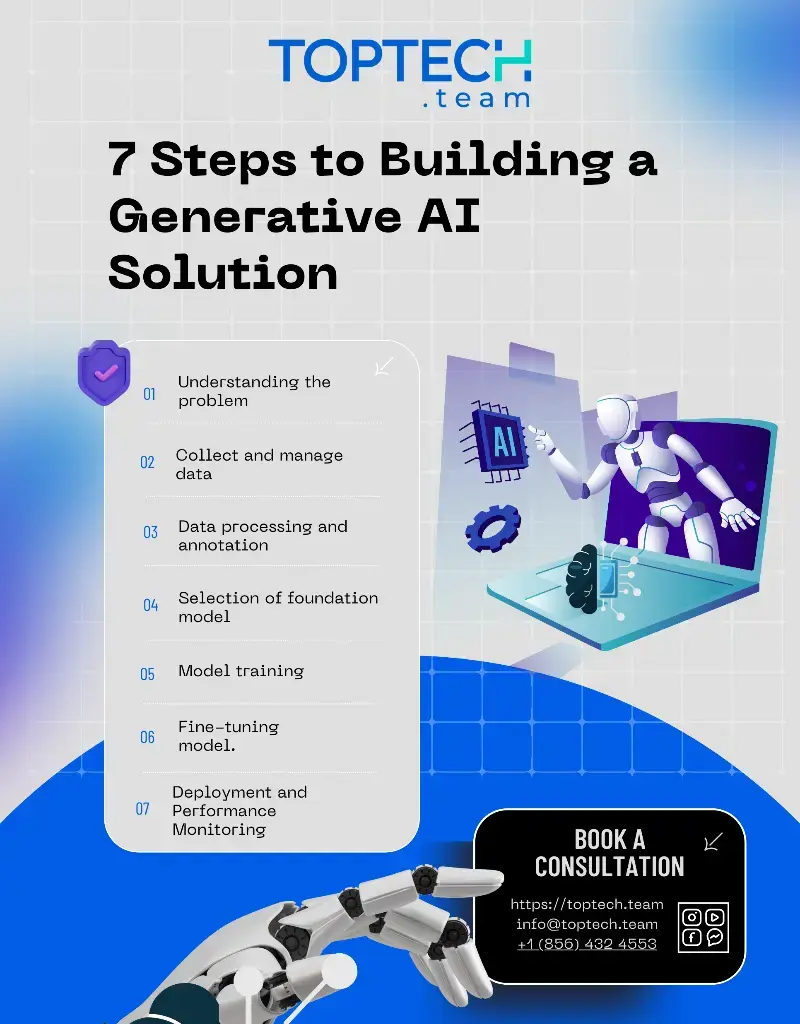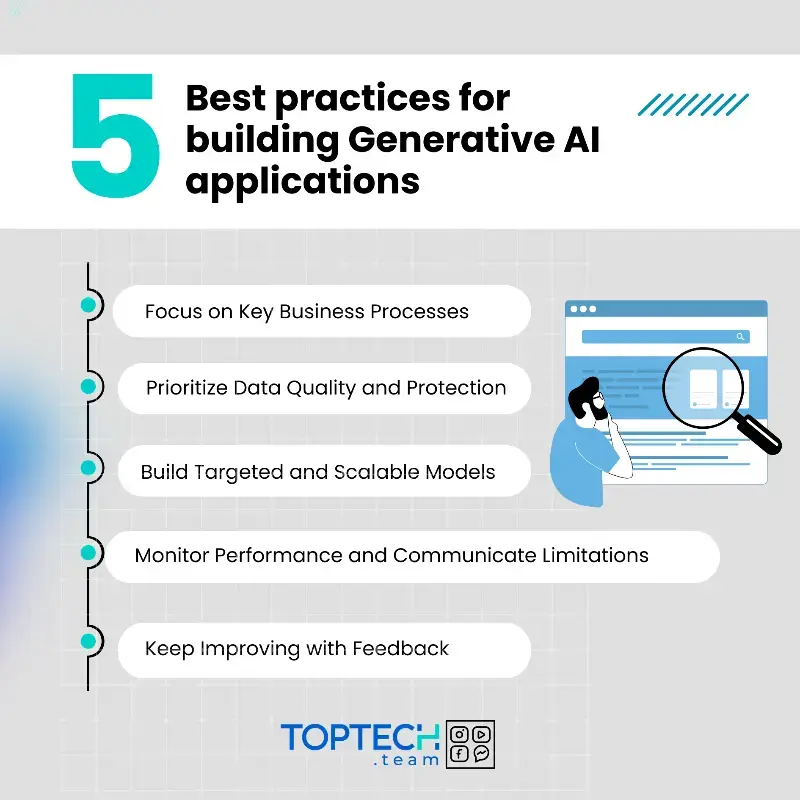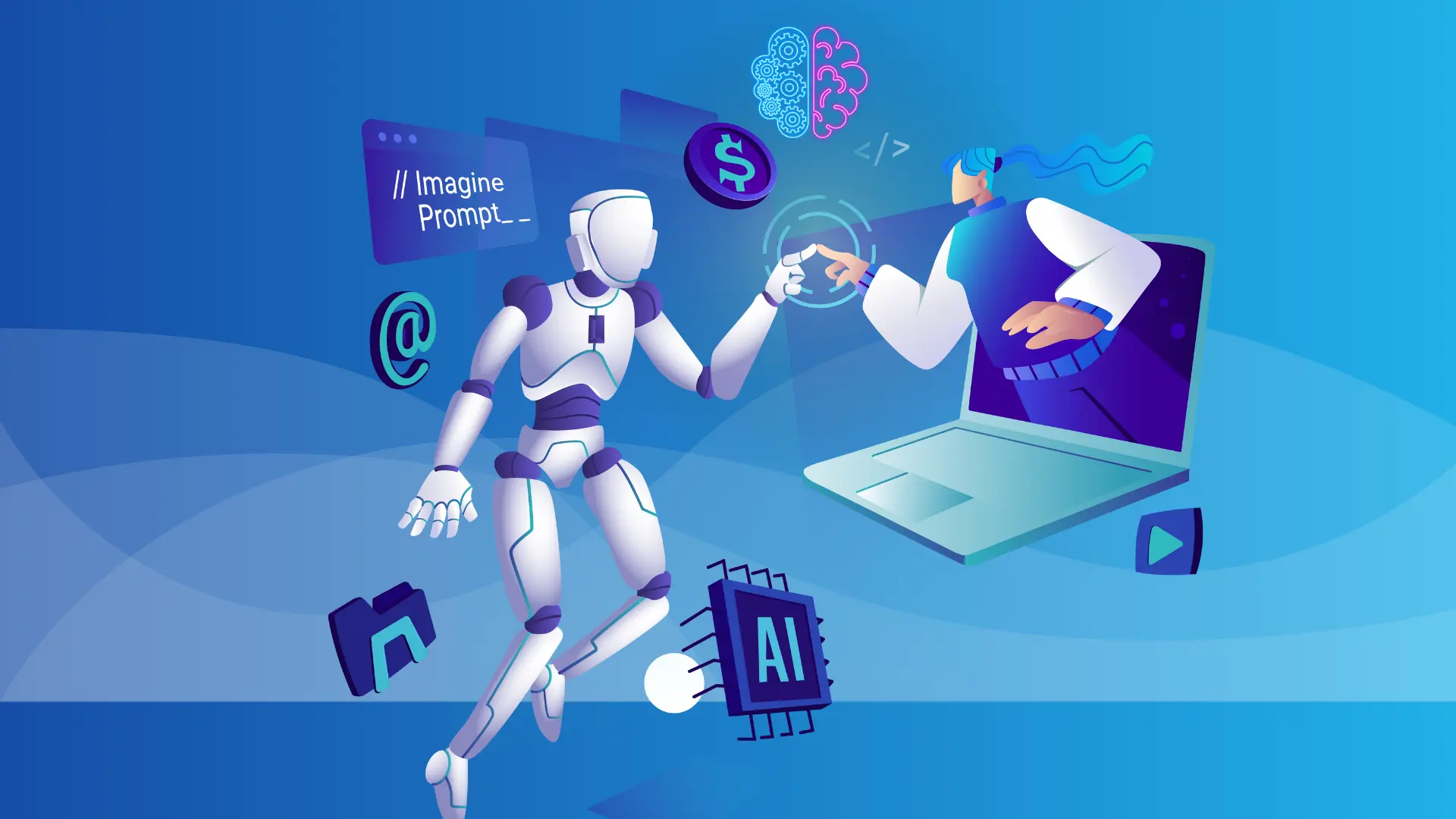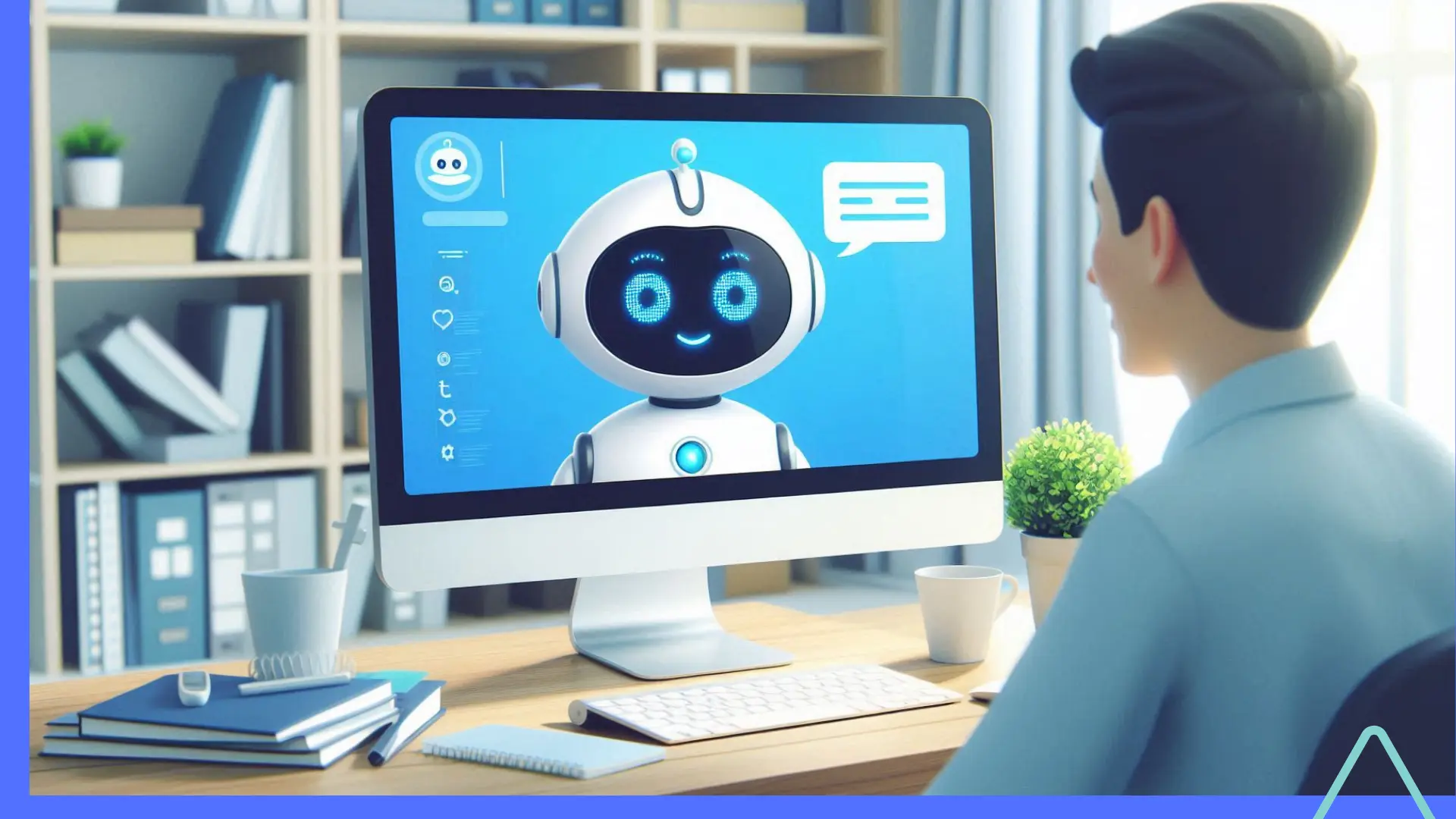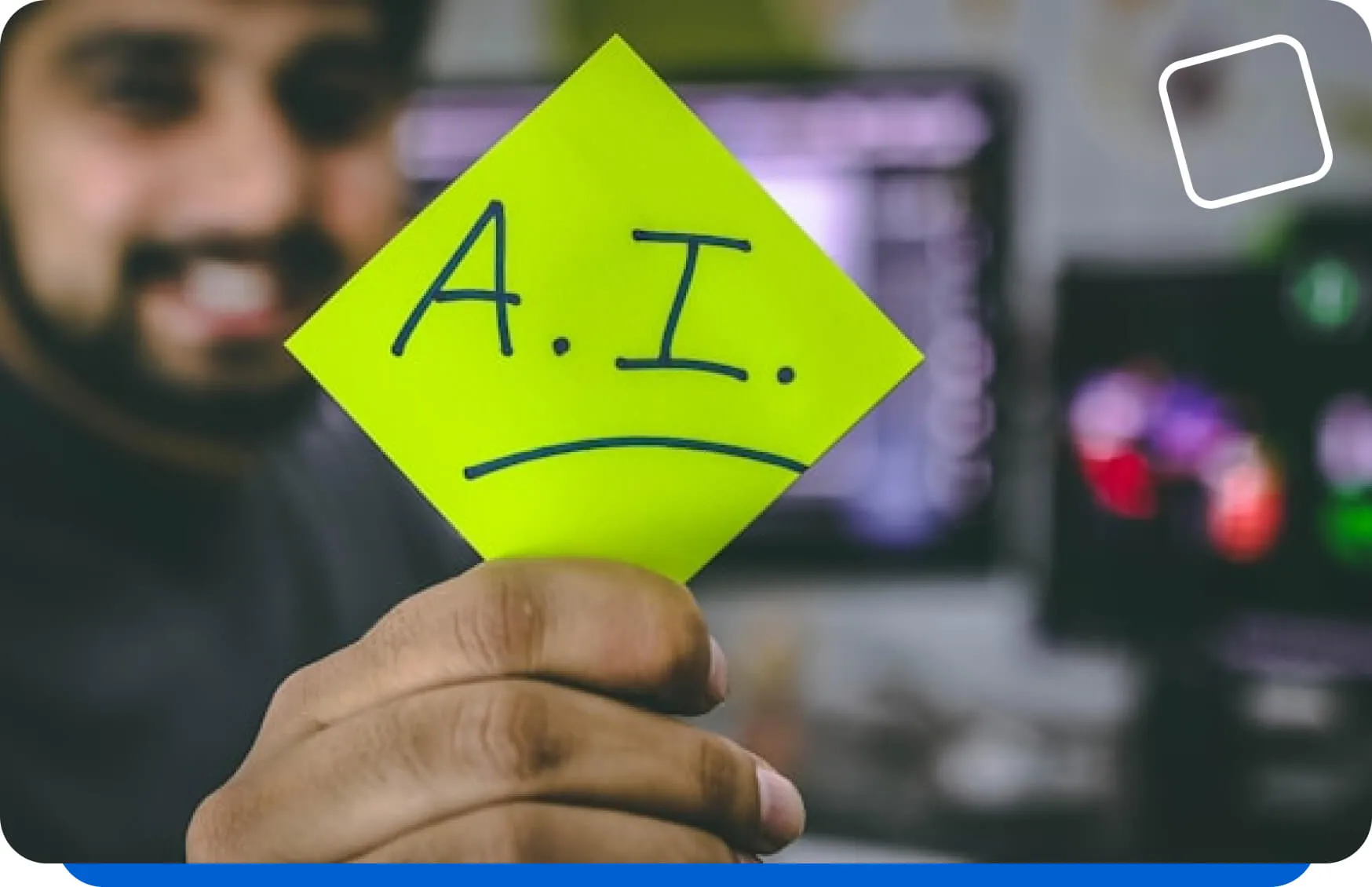Living in an era of technological advancement and engaging with it is truly amazing! Having such powerful tools at our disposal can transform creativity and innovation. By 2025, the ability to create your generative AI solution will be a valuable skill that will create opportunities in multiple fields, including art, music, marketing, and more.
Toptech will guide you across a broad pathway built on research and valuable insights to your desired destination, where you can create generative AI solutions.
WHAT IS GENERATIVE AI
When new content is created by artificial intelligence, it is called generative AI. Generative AI can produce unique text, images, videos, music, or voices. To generate these creative responses, we describe what we need the AI to do in a dialogue box. This description is known as a prompt.
“AI is the new electricity.” – Andrew Ng.
The Generative AI tools generate answers to all your queries, summarize complex information, and generate various ideas within seconds. It can create code, short stories, music compositions, and paintings. It is often remarkable and difficult to distinguish AI-generated content from that produced by humans.
Examples of transformers include ChatGPT for text generation, DALL-E for image creation, AIVA for music composition, and DeepMind’s Dreamer for video generation.
WHAT CAN GENERATIVE AI DO?
Generative AI is transforming how businesses operate by creating different types of content. This technology has made it easier for people to produce background music for videos and voiceovers, enhancing multimedia experiences. Additionally, generative AI improves data accuracy, allowing retailers to provide customized client experiences.
Let’s explore what Generative AI can do and how it changes industries.
1. Visual Content Creation
Visuals play an important role in attracting customers. Generative AI aids businesses by generating visuals related to their products and services, creating realistic images. With these tools, users can adjust visuals according to their preferences, which helps uniquely distinguish their products.
We can use tools like MidJourney and DALL-E to enhance visuals.
- MidJourney: It is an AI tool that creates detailed, high-quality images based on the descriptions we provide, making it perfect for generating unique visuals and branding.
- DALL-E: Developed by OpenAI, it allows users to create images from text prompts, enhancing visuals and storytelling for businesses.
2. Security and Monitoring
Detecting fraud, identifying cybersecurity threats, and monitoring unusual patterns, generative AI plays a vital role in enhancing security in real-time.
- Zest AI: By observing patterns in customer transactions, it identifies financial fraud.
- Darktrace: An advanced tool that uses AI to detect and respond to cybersecurity threats by understanding network behavior.
- AI in Banking: Banks use AI to notice unusual spending, which helps protect customers from fraud.
Generative AI strengthens security measures and ensures businesses and individuals can operate in a safer digital environment.
3. Customer Assistance and Support
Generative AI has changed the traditional ways of handling customer services. Interaction has become efficient and way faster with the assistance of AI-driven chatbots and virtual assistance.
ChatGPT and Zendesk help companies respond to customers’ queries instantly by providing accurate and necessary information around the clock. It also can manage multiple conversations at the same time, which leverages human agents to focus on more complicated tasks.
Examples:
- H&M AI Chatbot: This chatbot facilitates customers in tracking their products and informs them about the availability of these products in stores.
- Bank of America Erica: It provides virtual assistance in multiple things like answering financial queries, alerting the users about unusual account activity, and giving budgeting tips.
4. Data Structuring
The generation of images and text is making Generative AI a dominant player in the tech world, and it is equally useful in organizing data in technical applications. A data scientist uses tools, for instance, ChatGPT to format information into specific structures such as JSON, and Figma, which is easier to work within programming.
How Generative AI solutions is Changing Industries
1. Education and Learning
Generative AI has brought a significant shift in education by creating and introducing interactive tools that have made learning personalized and fun. AI-driven platforms like Khan Academy’s tutor offer customized help to students by illustrating ideas, providing practice exercises, and guiding them in solving problems. Another example is Duolingo, which uses AI to create language lessons that align with each learner’s pace, giving them the satisfaction of improving at their speed.
2. Health
With the involvement of Generative AI in the healthcare industry, some exciting changes have been seen in diagnostic, drug discovery, and patient care.
AI tools like DeepMind aid doctors by observing X-rays, MRI, and other scans remarkably. With the help of generative AI, detecting conditions like cancer and eye disease at an early stage becomes easier.
Examples:
- Ada Health: It is a virtual assistance app that analyzes symptoms and suggests possible conditions.
- PathAI: It helps doctors analyze tissue samples by improving pathology accuracy.
3. Entertainment and Media
Generative AI has its hold almost everywhere in the tech sphere. In the media and entertainment industries, Gen AI plays its role by creating music, games, movie scripts, and even entire media campaigns.
Examples:
- Entertainment:
- OpenAI Jukebox: It generates quality music across various genres, giving artists new creative possibilities.
- AI Dungeon: With the help of this tool, you can create interactive storytelling and explore endless narrative possibilities.
- Media:
- Lumen5: This tool makes media production more efficient by turning text-based articles into compelling video content.
- Wordsmith by Automated Insights: It creates personalized content for topics including sports scores and financial reports, making it easier to produce relevant and on-time articles.
4. Creative Innovation
Generative AI is revolutionizing the media and design industries. With these tools, designers can speed up the creation of creative assets and save time. AI suggests unique ideas and designs that help create new concepts, pushing the limits of creativity.
- Adobe Firefly: With this tool, a designer can create high-quality videos and images by entering simple input, which makes content creation feasible and enhances productivity.
- Sora: A specialized tool that generates 3D visuals for complex projects. With Sora, creators can bring intricate designs to life without compromising creativity or detail.
The Right Tech Stack for Building Your Generative AI Solution
Building your generative AI solution requires the right tools and technologies. Below is a simple guide to the tech stack you need:
Programming Language
- Python: Python is the main language widely used for AI and machine learning because of its simplicity and extensive library and support.
Deep Learning Frameworks
- TensorFlow: This tool is used to build and train neural networks. It offers flexibility and adaptability for diverse machine-learning tasks.
- PyTorch: A user-friendly and widely used framework that is popular in both research and production environments.
Generative Model Architectures
- GANs (Generative Adversarial Networks): In this model, two networks compete with each other to produce quality outputs, making them more realistic and accurate.
- VAEs (Variational Autoencoders): These models can produce different versions of data, making it easier to explore and experiment with ideas.
- Transformers (e.g., GPT): These are essential models for modern AI applications, known for creating text and often used for tasks that involve understanding and processing language.
Data Processing Tools
- NumPy: This library handles and processes large sets of data, making it easy to perform important tasks that require quick data manipulation.
- Pandas: It visualizes, organizes, and analyzes data with simple tools, making data handling straightforward.
- spaCy and NLTK: When the data is unstructured, these tools help process and understand it to provide useful information.
Image Processing Tools
- OpenCV: An important computer vision library that helps developers effectively work with images and videos.
- PIL (Python Imaging Library): It helps in handling visuals and simplifies the process of opening, editing, and saving images in different formats.
GPU Acceleration
- NVIDIA CUDA and cuDNN: These tools speed up training deep learning models by utilizing the power of graphics (GPUs).
Cloud Infrastructure
- AWS (Amazon Web Services): It offers services that help in training and launching machine learning models in a scalable way.
- Google Cloud Platform (GCP): This platform provides simple tools to deploy machine learning models, ensuring effective operation.
- Microsoft Azure: It supports building and deploying AI models efficiently, offering a robust environment for development.
Model Deployment Tools
- Docker: This tool packages applications into containers, simplifying their deployment across different environments.
- Kubernetes: It orchestrates these containers on multiple machines to ensure the application runs smoothly even at a larger scale.
- Flask & FastAPI: These frameworks build APIs that allow AI to work and connect with other applications.
Experiment Tracking
- TensorBoard: This tool visualizes training progress and key results, helping developers see their models improve over time.
- MLflow: Tracks machine learning experiments, making it easy to compare results and manage different versions of models.
Version Control
- GitHub or GitLab: These platforms make it simple for teams to work together and help manage version control in projects efficiently.
Additional Tools
- LangChain: This tool optimizes how models process input data during training, ensuring outputs are clear and relevant.
- Vector Databases (e.g., Pinecone, Weaviate): These databases store complex data patterns generated by AI models, allowing quick searches and efficient data access.
NECESSARY STEPS TO BUILD YOUR GENERATIVE AI SOLUTION
1. Understanding the Problem
- Identifying and understanding the problem are the first steps in building the right Generative AI solution. Clearly defining the specific challenge your AI solution will address, such as generating text, images, or music, is considered an effective approach.
- Detailed Desired Output: Clarify what you need from the AI model: if it is text, decide on the style and language; if it is images, specify the resolution and artistic style.
- Understand Technology Capabilities: Learning about the technologies involved will provide a better understanding of building AI solutions (e.g., CNNs for images and RNNs for sequences).
- Set Success Metrics: Defining success metrics is essential, such as using BLEU scores for text or inception scores for images to assess performance.
2. Collect and Manage Data
- Sourcing Data: Collect data from multiple sources that are relevant to your problems. This could include web scraping, APIs, databases, or proprietary datasets.
- Ensure Diversity and Volume: Gathering a wide range of data helps in making your model robust. It should include different types of information and scenarios.
- Ensure it follows data privacy laws (like GDPR) during data collection.
- Check Data Quality: This step is significant because accuracy is everything. Your data should be accurate and relevant. It can be cleaned by removing duplicates, fixing errors, filtering, and handling missing values.
- Follow Ethical Guidelines:
3. Data Processing and Annotation
- Data Cleaning: Using tools like Python’s pandas can remove errors and fix inconsistencies in your dataset.
- Normalize Data: Adjust your data for consistent feature scales so no single feature dominates.
- Augment Data: Enhance your dataset by making changes like rotating images or replacing words with synonyms. This makes your model more reliable and versatile.
- Label Data: Carefully categorize your data, like tagging images or labeling text with sentiments, to prepare it for supervised learning tasks.
4. Selection of a Foundational Model
- Choosing the right foundational model that aligns with your specific requirements is the best policy.
- Use GPT-4 or LLaMA-3 for the generation of text.
- Opt for DALL-E 2 for creating images.
- Take these factors into consideration, such as the nature of your task, the compatibility with your data, the model’s size, and the computational resources available.
5. Model Training
- Train your selected foundational model using the prepared datasets:
- Break down your dataset into smaller units, called tokens (e.g., words or subwords), since these models process data in tokenized form rather than raw text.
- Leveraging advanced hardware like GPUs for training, the training process can be time-intensive, particularly for larger models.
6. Fine-Tuning the Model
- Fine-tuning is an important step in adapting a pre-trained model to your specific task:
- Prepare Your Data: Ensure the data is clean and in the correct format, as this is necessary for training to yield good results. Keep checking for errors and make sure it’s fully prepared for the model to use.
- Adjust Model Architecture: If necessary, you can change parts of the model to achieve a better and more fitting output. This might involve modifying the last layers of the model to match your specific task.
- Optimize Parameters: Focus on adjusting learning rates and other settings to improve performance.
- Apply Regularization Techniques: Use methods like dropout to help prevent overfitting. These changes ensure that your model can generalize well to new, unseen data instead of just memorizing the training data.
7. Deployment and Performance Monitoring
- Once your generative AI solution is ready, the next step is deployment:
- Cloud-based or On-Premise: Choose an appropriate environment in the cloud or on your servers.
- System for Continuous Updates: Verify that you have a solid system for continuous updates and maintenance. Adopting CI/CD (Continuous Integration/Continuous Deployment) practices will help keep your model updated and perform well.
- After deploying the AI solution, it is necessary to keep track of its performance in real-world applications:
- Collect User Feedback: Gather feedback regularly from users to know where your model can improve.
- Update and Retrain the Model: Regularly updating the model will retain its relevancy and retrain it with new data when necessary.
By following these simple steps, you can effectively build a generative AI solution that meets specific needs while leveraging technological advancements in 2025.
Effective Practices for Building Generative AI Applications
Building Generative AI solutions can sometimes be challenging, but you can overcome possible obstacles with careful planning and implementation. Some essential practices to enhance your approach:
- Focus on Key Business Processes: Not every feature needs an upgrade, so give priority to those changes that can bring significant value to your users. Secondly, identify a key area within your business that will benefit most from Generative AI. Small and impactful adjustments can lead to meaningful improvements.
- Prioritize Data Quality and Protection: The protection of data is crucial for safeguarding user information. Follow data privacy rules like GDPR, and you can use safety measures like encryption to avoid data risks, especially when handling large amounts of sensitive data during training and operation.
- Build Targeted and Scalable Models: Design specific small models for your business needs rather than investing much in big generic models like ChatGPT. Fine-tuning pre-trained models can produce better results while saving money. Secondly, build a strong system that can handle more users and higher demands by using techniques like distributed computing and load balancing.
- Monitor Performance and Communicate Limitations: Monitor your generative AI solution regularly to identify any problems or slowdowns. Use appropriate tools for performance checks, monitor key metrics, and ensure optimal functionality. Since no model is perfect, informing users about its limitations is important. For example, these models may sometimes generate incorrect or biased responses.
- Keep Improving with Feedback: Test your AI solutions thoroughly in different real-world situations to ensure they meet quality standards. Maintain detailed records during and after development to keep everything transparent and reproducible. Listen to user feedback and use it to improve your AI over time.
By following these steps, you can build an AI solution that works well for users while navigating the complexities of AI technology.
What’s the Cost of Developing a Generative AI Solution?
The first question that often arises when building your desired generative AI solution is the cost, which can seem expensive, especially with training and deploying the model. But is AI development really that expensive? Well, cost depends on the complexity, type, and size of your project. If you’re not developing something as complex as ChatGPT, the expenses are usually manageable.
For example, at Toptech, we can create a Proof of Concept (PoC) in just 1 month for as little as $5,000. The final cost will depend on factors like the model’s training requirements, app features, and the scope of the project. With over four years of experience, Toptech is a dedicated and passionate company proud to help startups and enterprises at a reasonable cost. We are experts in reducing risks and maximizing returns by ensuring our presence at every stage of development and listening carefully to users’ feedback. What matters most to us is delivering real value to our clients.
What Does It Take to Build a Generative AI Model?
Building a Generative AI model takes just seven simple steps:
-
- Understanding the problem.
- Collect and manage data.
- Data processing and annotation.
- Selection of foundation model.
- Model training.
- Fine-tuning model.
- Deployment and performance monitoring.

